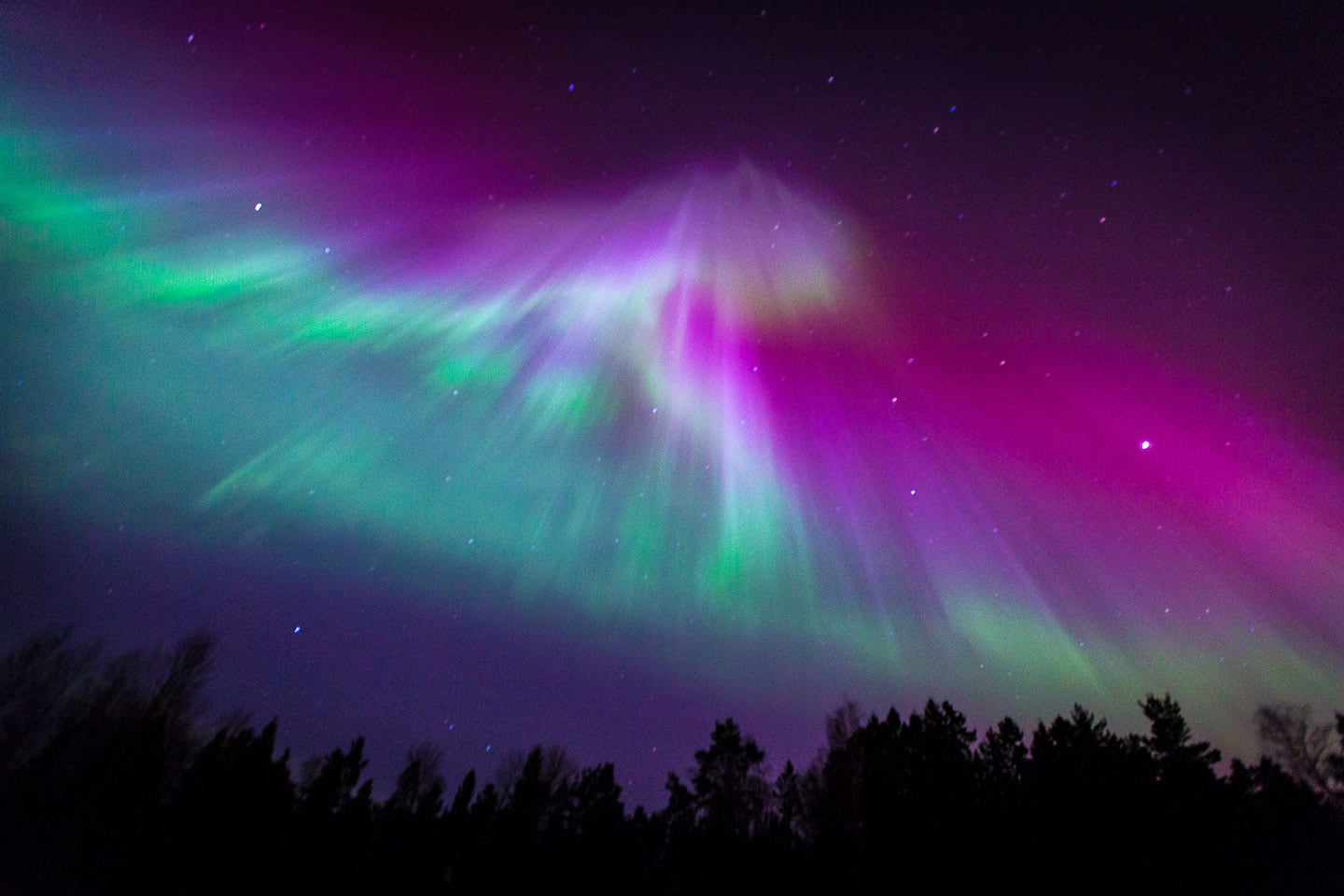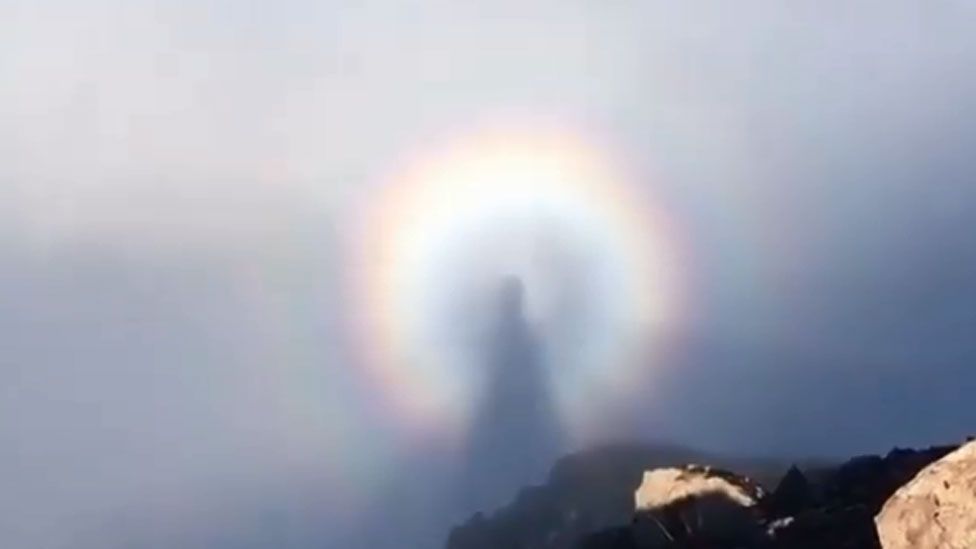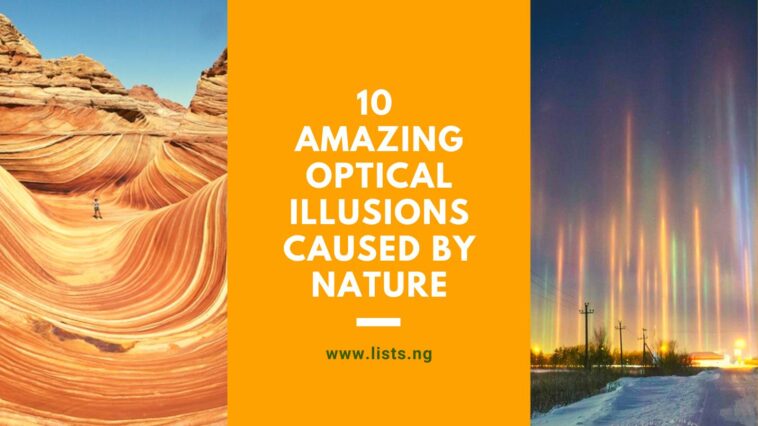Nature is beautiful but it often produces phenomena that sometimes mess with our eyes and our head. From fire falls to humongous shadow of an observer, these illusions deceive the eyes, appearing to be other than they are.
1. Horsetail Falls

Horsetail Fall, located in Yosemite National Park in California, is a seasonal waterfall that flows in the winter and early spring. For a couple of weeks around mid-February, the fall may be lit up by the setting sun, creating the illusion of a blazing waterfall. The spectacle lasts around 10 minutes in good viewing conditions and is commonly referred to as the “firefall”
2. Aurora

An aurora, sometimes referred to as polar lights, northern lights, or southern lights, is a natural light display in the Earth’s sky, predominantly seen in the high-latitude regions. Auroras are the result of disturbances in the magnetosphere caused by solar wind. The resulting ionization and excitation of atmospheric constituents emit light of varying color and complexity.
3. The Wave (Arizona)

The Wave is a sandstone rock formation located in Arizona, United States, near its northern border with Utah. The formation is well-known among hikers and photographers for its colorful, undulating forms and the difficult hike required to reach it. An ideal time to photograph the Wave is the few hours around midday when there are no shadows in the center.
4. Lenticular Cloud

Lenticular clouds are stationary clouds that form mostly in the troposphere (the lower boundary of the stratosphere), typically in perpendicular alignment to the wind direction. They are often comparable in appearance to a lens or saucer. Because of their unique appearance, they have been suggested as an explanation for some unidentified flying object (UFO) sightings.
5. Arcus clouds
Arcus clouds form with cumulonimbus clouds and downdrafts, they are associated with strong gusty winds, heavy rain or even hail storms along with thunder and lightning. Arcus clouds appear along the coast and they look really cool.
6. Anticrepuscular rays

Anticrepuscular rays, or antisolar rays, are meteorological optical phenomena that appear opposite of the Sun in the sky. Anticrepuscular rays are essentially parallel, but appear to converge toward the antisolar point, the vanishing point, due to a visual illusion from linear perspective. Anticrepuscular rays are most frequently visible around sunrise or sunset.
7. Airglow

Airglow is a faint emission of light by a planetary atmosphere. This optical phenomenon causes the night sky never to be completely dark, even after the effects of starlight and diffused sunlight from the far side are removed. Airglow is simply the beautiful natural “glowing” of the Earth’s atmosphere.
8. Brocken Spectre

A Brocken spectre is the magnified (and apparently enormous) shadow of an observer cast upon clouds opposite the Sun’s direction. The figure’s head is often surrounded by the halo-like rings of coloured light forming a glory, which appears opposite the Sun’s direction when uniformly-sized water droplets in clouds refract and backscatter sunlight. The phenomenon can appear on any misty mountainside or cloud bank, even when seen from an aeroplane.
9. Mirage

A mirage is an optical illusion caused by atmospheric conditions in which refraction of light from the sky by heated air. This phenomena is characterized by the appearance of a sheet of water in a desert or on a hot road.
10. Light Pillar

A light pillar is an atmospheric optical phenomenon in which a vertical beam of light appears to extend above and/or below a light source. The effect is created by the reflection of light from tiny ice crystals that are suspended in the atmosphere or that comprise high-altitude clouds. If the light comes from the Sun, the phenomenon is called a sun pillar or solar pillar. Light pillars can also be caused by the Moon or terrestrial sources, such as streetlights.






